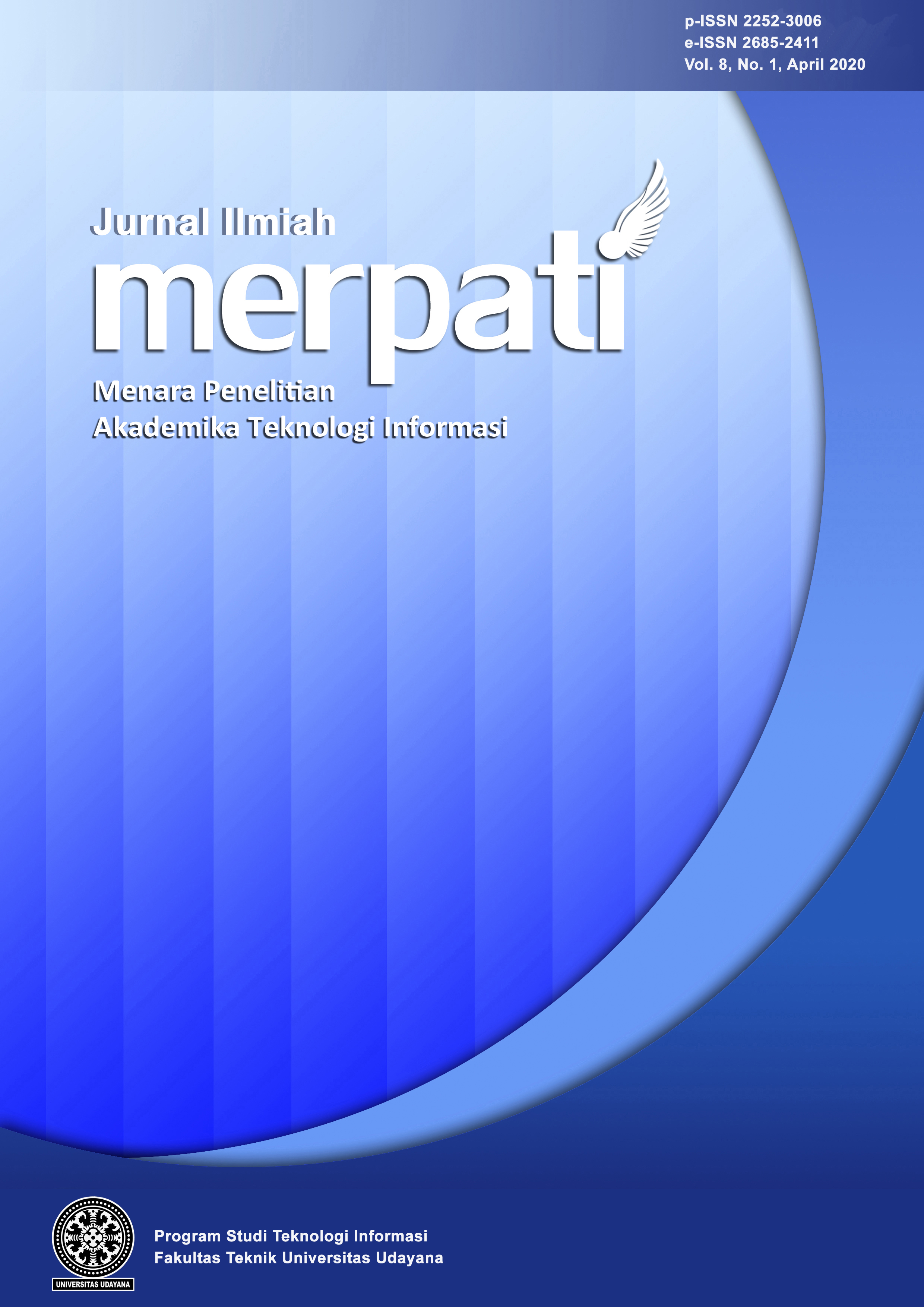Implementation Drought Area Identifier Application Of East Bali Based On Remote Sensing
Abstract
Drought is a natural disaster whose frequency is quite high and occurs almost every year. According to the radarbali.jawapos.com page on June 15, 2019, rice fields in Karangasem are threatened by drought. 2000 hectares of agricultural land threatened with drought or did not get irrigation supply because during the dry season the water source used to irrigate the land was drastically reduced and even partly dried up. From the observations of the UPTD of the Horticultural Agricultural Plant Protection Agency (BPTPH) of the Bali Provincial Agriculture Office, until June 2019 there was damage to rice fields due to drought where observations were made since the start of the planting season in May. Drought area information is used to map and calculate the area of drought areas, so that areas with drought potential can be identified. One way to get drought area data is by remote sensing technology. Identification of potential drought areas is the basic idea for the formation of drought identification applications in East Bali. The remote sensing application uses the NDDI (Normalized Difference Drought Index) method. NDDI is the result of calculation of the Normalized Difference Vegetation Index (NDVI) which is an index of vegetation parameters and Normalized Difference Water Index (NDWI) which is the value of wetness of vegetation. The images used in this study are Landsat 8 imagery with OLI (Onboard Operational Land Imager) sensor and TIRS (Thermal Infrared Sensor) sensor. The result of the application of drought area identification is the visualization of drought area and the extent of drought area based on the category of very dry, dry, mild dry, normal and non-classification using hectare units.







